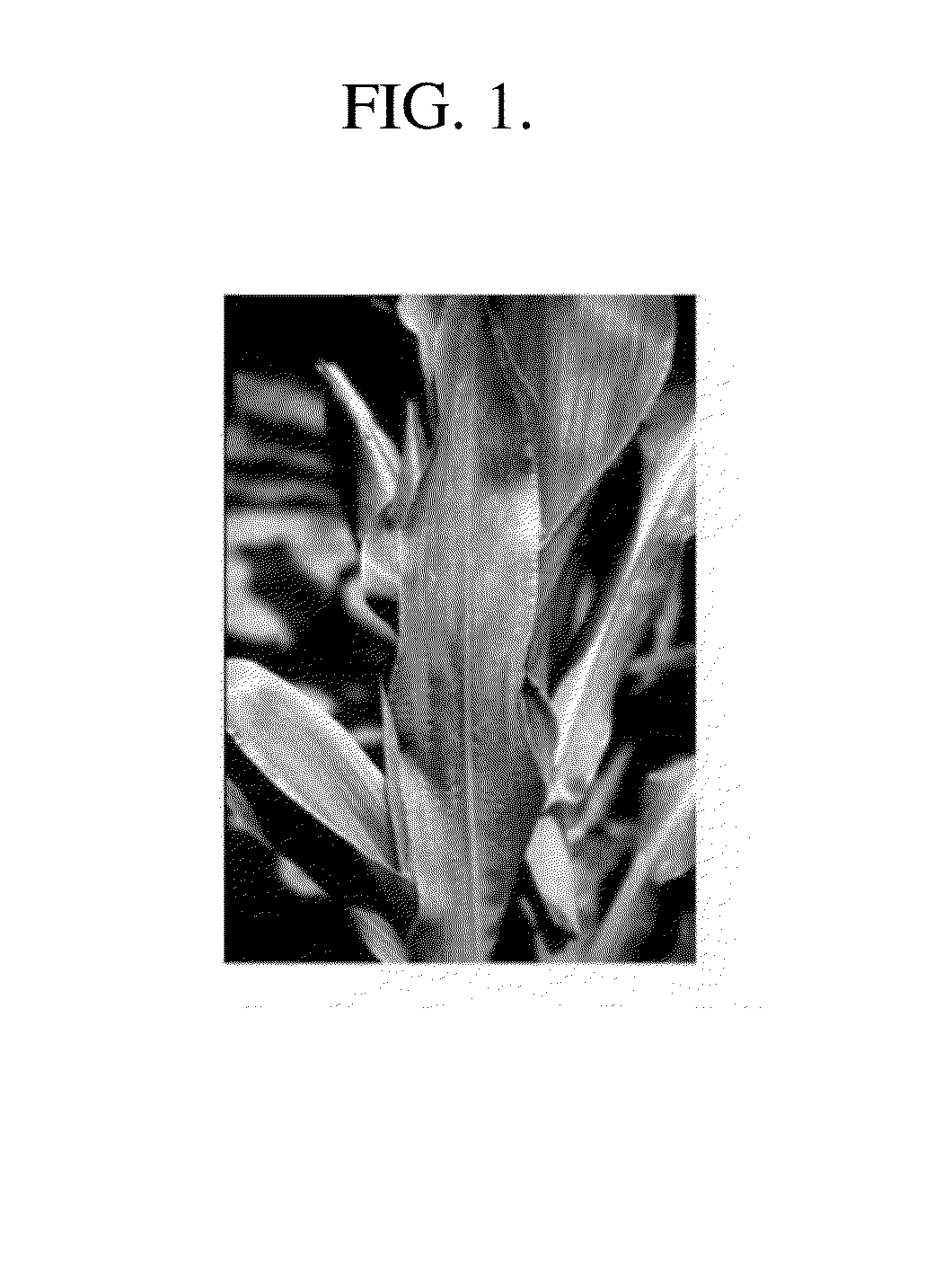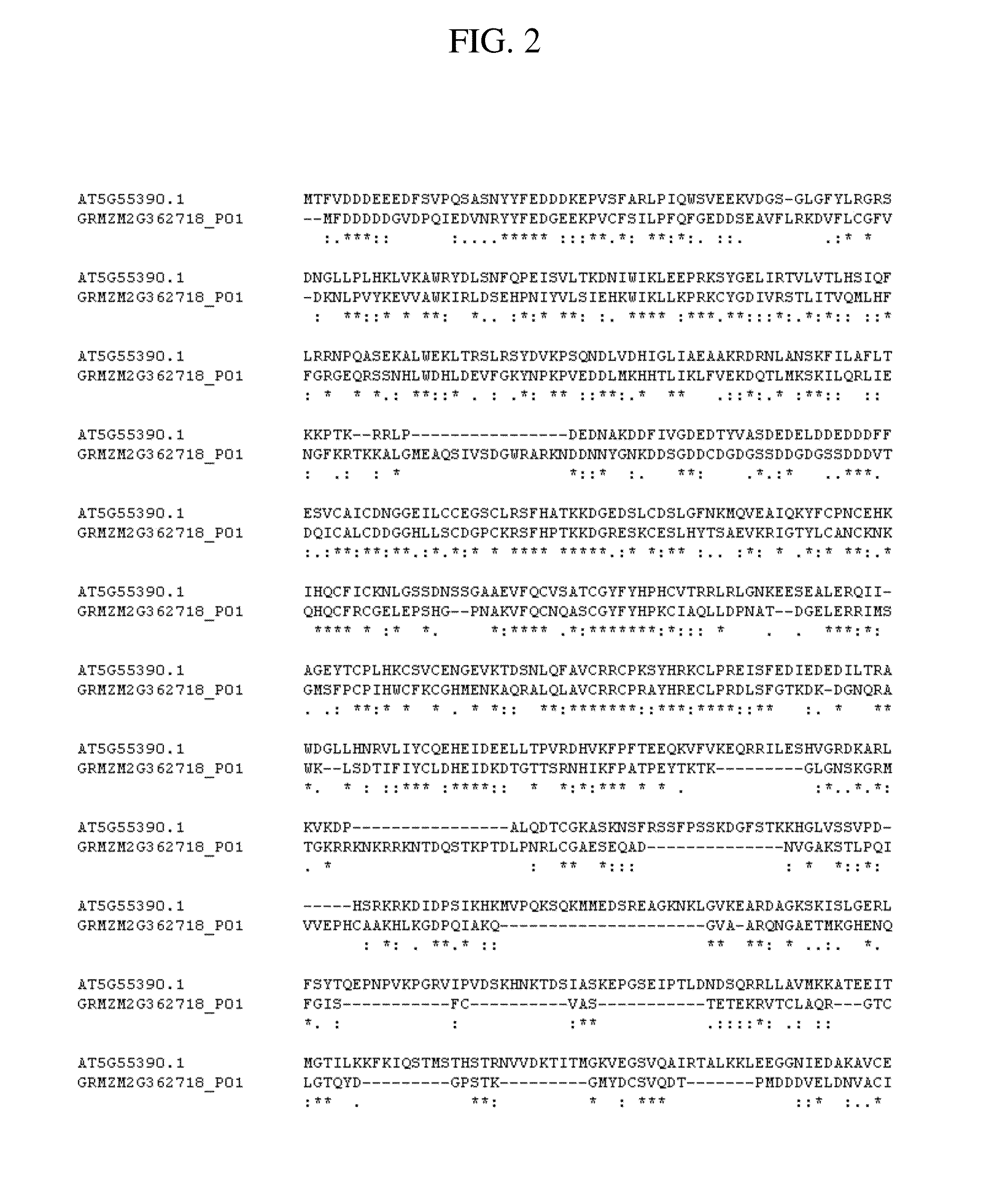Extending juvenility in grasses
a grass and juvenility technology, applied in the field of grass juvenility extension, can solve the problems that the control of the transition between juvenile and adult tissue in plants by genes has not been well understood, and achieves the effects of enhancing the resistance to a plant pest, enhancing the yield of vegetative tissue, and enhancing the digestibility of vegetative tissu
- Summary
- Abstract
- Description
- Claims
- Application Information
AI Technical Summary
Benefits of technology
Problems solved by technology
Method used
Image
Examples
example 1
Genetic Structure of Juvenile to Adult Phase Change in Maize
[0108]Juvenile and adult vegetative tissues in grasses differ dramatically in anatomy, biochemical composition, and in their ability to withstand biotic and abiotic stresses. A maize transition leaf, with juvenile tissue distinguished by the presence of epicuticular wax with a dull blueish appearance is shown in FIG. 1. Dark glossy green portions of the leaf are adult tissue.
[0109]The molecular network controlling the process of developmental transition has been poorly understood. The present study utilizes the dramatic variation in the timing of juvenile to adult vegetative transition in different maize populations to identify genes and pathways controlling this fundamental biological process. This work evaluates structured populations and diverse collections of maize that have been characterized extensively for allelic variation, for instance at the GRMZM2G362718 locus, in order to provide a genetic basis for the extensiv...
example 2
[0111]The primary trait that was scored to reflect the timing of juvenile to adult transition was the last leaf with juvenile wax (FIG. 1). Maize leaves, in order of emergence, can be fully juvenile, part juvenile and part adult (termed transition leaves), and fully adult. Since the earliest emerging juvenile leaves can senesce and become no longer visible at the time that the uppermost transition leaf can be scored, leaf 5 was marked at the young seedling stage (˜V7) by punching a hole in the leaf with a leaf punch. At the ˜V10 stage, a paper collar was secured around the stalk between leaf 8 and 9 to mark that internode before the punched leaf 5 fully senesced. The last leaf with juvenile wax was scored on 5 plants per plot with the exact node from which it emerged determined by the position of the leaf collar. At flowering time or thereafter, the total number of leaves (nodes) was determined by counting 5 plants per plot. Node number is both a measure of the du...
example 3
QTL Analysis and Integration of QTL Results Across Materials
[0117]1. Nested Association Mapping (NAM) Population:
[0118]1106 single nucleotide polymorphisms (SNPs) markers on the 3875 NAM lines (Buckler et al., Science 325:714-718, 2009) were used for composite interval mapping with Windows QTL Cartographer v2.5 (Wang, http: / / statgen.nesu.edu / qtlcart / WQTCart.htm, 2011). One thousand permutations were performed to determine an appropriate significance threshold.
[0119]QTL were then mapped in a combined analysis of all 25 NAM populations by joint stepwise regression of transition leaf on the same 1106 SNP makers. Because stepwise regression cannot use individuals with missing marker data, an initial step was to impute missing markers. In the joint stepwise regression, a population and marker by population effect was fit. Using the SAS experimental procedure, GLMSELECT, covariates were determined by forward regression (p=0.0001) and SQL was subsequently used to calculate a likelihood rat...
PUM
| Property | Measurement | Unit |
|---|---|---|
| temperature | aaaaa | aaaaa |
| length | aaaaa | aaaaa |
| temperature | aaaaa | aaaaa |
Abstract
Description
Claims
Application Information
 Login to View More
Login to View More - R&D
- Intellectual Property
- Life Sciences
- Materials
- Tech Scout
- Unparalleled Data Quality
- Higher Quality Content
- 60% Fewer Hallucinations
Browse by: Latest US Patents, China's latest patents, Technical Efficacy Thesaurus, Application Domain, Technology Topic, Popular Technical Reports.
© 2025 PatSnap. All rights reserved.Legal|Privacy policy|Modern Slavery Act Transparency Statement|Sitemap|About US| Contact US: help@patsnap.com



